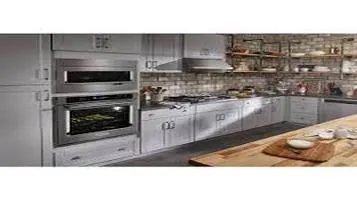A Comprehensive Review of Minimalist Lighting Fixtures
Minimalist lighting fixtures are characterized by their sleek, simple, and functional designs that emphasize form and function without unnecessary embellishments. These fixtures often feature clean lines, geometric shapes, and neutral color palettes, making them versatile additions to a variety of interior styles. Typically crafted from materials like metal, glass, or wood, minimalist lights focus on creating a serene and uncluttered ambiance, enhancing the space rather than dominating it. They are designed to provide optimal illumination while maintaining a low-profile aesthetic, allowing other elements of the room to shine. Perfect for modern and contemporary spaces, minimalist lighting fixtures embody the principle of "less is more," offering elegance and sophistication through their understated yet impactful presence.

In the realm of interior design, lighting holds a pivotal role—both functional and aesthetic. Among the myriad styles available, minimalist lighting fixtures have carved out a niche, embodying the principle that 'less is more.' These fixtures are characterized by their clean lines, simple forms, and an absence of superfluous details. As a design enthusiast and homeowner, I have recently integrated several minimalist lighting fixtures into my living space, and this review aims to delve into their various aspects, from design and functionality to versatility and overall impact.
Design and Aesthetic Appeal
Minimalist lighting fixtures shine in their ability to blend seamlessly with various interior design styles. Their understated elegance brings a sense of calm and balance to a room, making them ideal for modern, Scandinavian, and even industrial-inspired spaces. One of the most compelling aspects of minimalist lighting is its ability to act as both a statement piece and a complementary element.
For instance, pendant lights with sleek, geometric shapes can serve as focal points over dining tables or kitchen islands, while streamlined wall sconces provide subtle illumination without overwhelming the surrounding decor. The materials often used in these fixtures—such as matte metals, frosted glass, and neutral-toned finishes—further enhance their versatile appeal.
Functionality and Performance
Beyond aesthetics, minimalist lighting fixtures are designed with functionality in mind. One of the standout features is their efficient use of light. With the advent of LED technology, many minimalist fixtures provide ample illumination while consuming minimal energy. This not only translates to lower electricity bills but also aligns with sustainable living practices.
Moreover, the simplicity of these fixtures often means fewer components that can malfunction, leading to increased longevity and reduced maintenance. Adjustable features are another common trait, allowing users to direct light precisely where it’s needed, whether it’s a task light for reading or ambient light for relaxation.
Versatility and Integration
The versatility of minimalist lighting cannot be overstated. These fixtures are available in a myriad of designs, from floor lamps and table lamps to chandeliers and track lighting, making them suitable for virtually any room in the house. Their neutral aesthetic ensures they can be easily integrated into existing decor without clashing with other elements.
In my personal experience, the installation process for these fixtures was straightforward, primarily due to their uncomplicated design. Whether it was a ceiling-mounted fixture or a wall-mounted sconce, the minimalist approach often translates to easier installation and fewer headaches.
Impact on Space and Mood
Lighting profoundly affects the ambiance of a room, and minimalist fixtures excel in creating a serene, uncluttered environment. By reducing visual noise, these fixtures help to cultivate a space that feels open and airy. This can be particularly beneficial in smaller rooms or apartments where space is at a premium.
The quality of light emitted by minimalist fixtures also contributes to a room's mood. Soft, diffused lighting creates a warm and inviting atmosphere, perfect for living rooms and bedrooms. In contrast, more focused lighting options can enhance productivity in home offices or kitchens. The ability to layer different types of minimalist lighting within a single space allows for a dynamic yet cohesive lighting scheme.
Drawbacks and Considerations
While there are numerous advantages to minimalist lighting fixtures, there are a few potential drawbacks to consider. The simplicity of the design may not appeal to those who prefer more ornate or traditional aesthetics. Additionally, because these fixtures often rely on high-quality materials and craftsmanship, they can be more expensive than mass-produced alternatives.
Another consideration is that minimalist fixtures, by design, may not always provide the same level of decorative flair as more elaborate options. For those looking to make a bold statement with their lighting, minimalist designs might feel too subdued.
Conclusion
Minimalist lighting fixtures offer a harmonious blend of form and function, making them a worthy investment for any modern home. Their design ethos, rooted in simplicity and efficiency, resonates with contemporary trends towards sustainable and thoughtful living. These fixtures not only enhance the aesthetic appeal of a space but also contribute significantly to its functionality and ambiance.
While they may not cater to every taste, the enduring appeal of minimalist lighting lies in its versatility and timeless elegance. For those seeking to create a serene, uncluttered environment, these fixtures are an excellent choice. They serve as a testament to the power of simplicity, proving that sometimes, less truly is more.






